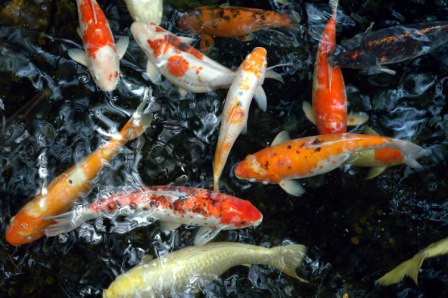If you have a water garden, then undoubtedly you probably treasure your Koi fish as much as I do. This article will give you a brief overview of your prized possessions.
A Little History
Koi are considered the most popular freshwater ornamental pond fish. Koi, known as “Nishikigoi”, is the mascot of Japan. “Nishiki” is Japanese for a very colorful piece of cloth and “Goi”, or Koi, is Japanese for carp. Contrary to popular belief, Koi did not originate from Japan, rather there are conflicting stories on their origination ranging anywhere from Western to Eastern Asia to China.
Their Growth
Koi average around 31 inches in length but some have been known to grow over 3 feet long. Their growth is heavily determined by their environmental conditions such as pond size, oxygen concentration, water temperature and quality, amount and type of food and length of growing season.
Their Hearing
While the average fish is said to hear frequencies no higher than 1,000 hertz, the Koi can hear up to 3,000 hertz. This is due to their unique amplification system found in Cypriniformes, the basal order of the super order Ostariophysi, biologically speaking.
This amplification system called Weberian Apparatus consists of 4 pairs of bones called ossicles, which form a link that connects their inner ear to their swim bladder greatly increasing their ability to hear.
Importance of a Balanced Diet:
Research has shown that if koi are not fed a lacking in essential nutrients, the likelihood of a weakened immune system leading to diseases increases. Other issues that can result are poor growth and coloration, as well as deformed fins and spines. An informative article on seasonal fish food can provide more insight to their dietary needs.
References:
http://myfundi.co.za/e/Introduction_to_Ostariophysi_and_order_Cypriniformes
http://www.pondcare.com/reference-center/koi/physical-characteristics.aspx



